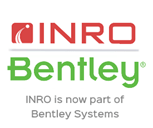Bus travel time estimation and prediction on arterial corridors for low frequency buses
Faria Shanjana Imam
Ason Group, New South Wales
Ashish Bhaskar, Associate Professor in Civil Engineering, Queensland University of Technology, QUT, Brisbane, Australia
Edward Chung, Associate Dean (Research), The Hong Kong Polytechnique University, Hong Kong
This presentation was delivered at the 2021 Online Conference Series and until October 2022 is only available to registered delegates and Content Access Pass holders via Interchange. For information on accessing this and other presentations please review the Content Access Pass options.
ABSTRACT
The accuracy and reliability of the real time and predictive traveller information system strongly influences users’ satisfaction and attitudes towards public transport (bus) systems. Many studies have suggested that the fusion of multi-source data can achieve higher precision in the estimation and prediction of travel time than that of single source data. Data oriented travel speed (or travel time) prediction models require accurate estimation of the historical time series with equally spaced data points. The availability of bus speed time series data points depends on bus frequency and other operational factors such as on time performance. Low frequency bus routes coupled with poor on time performance can result in time series with number of missing values (or irregular interval of data points).
Addressing the above need, this paper explores the relationship between bus and car speed and utilises the relationship to better estimate bus travel speed time series and its application for prediction of bus speed (or travel time). With a case study on a Brisbane corridor, car speed is estimated using Bluetooth MAC Scanner (BMS) and bus speed is estimated using Automatic Fare Collection data (Go card). Findings are encouraging and results of the integration of the two data sources indicate around 3% improvement in the bus speed estimation where the time series gaps are filled with car speed compared to the case where the time series gaps are filled with linear interpolation. Furthermore, this estimated bus speed time series is utilised to predict future bus speed with the application of Artificial Neural network (ANN). The prediction results are also improved for different prediction horizons.
This paper will assist transit operators across Australasia to take advantage of Bluetooth data to augment the performance of low frequency buses by estimating and predicting more accurate speed (travel time).
Author
Faria Shanjana Imam | Ason Group
Faria is a transport and traffic engineering professional, currently working as a Transport Modeller and Analyst at Ason Group, Sydney, Australia. She has received PhD degree in Transport Engineering from Queensland University of Technology (QUT) and bachelor’s degree in civil engineering from Bangladesh University of Professionals. She has established excellent skills in transport big data analytics, data reporting and visualisation, transport modelling and public transport planning. Further to that she is proficient in using different analytical tools used in transport data and reporting such as: Matlab, Excel, Stata, and data visualisation in Power BI and transport modelling such as: Aimsun and SIDRA







